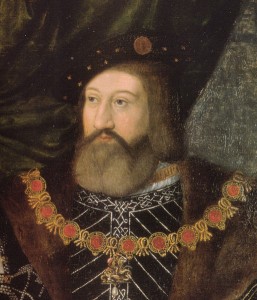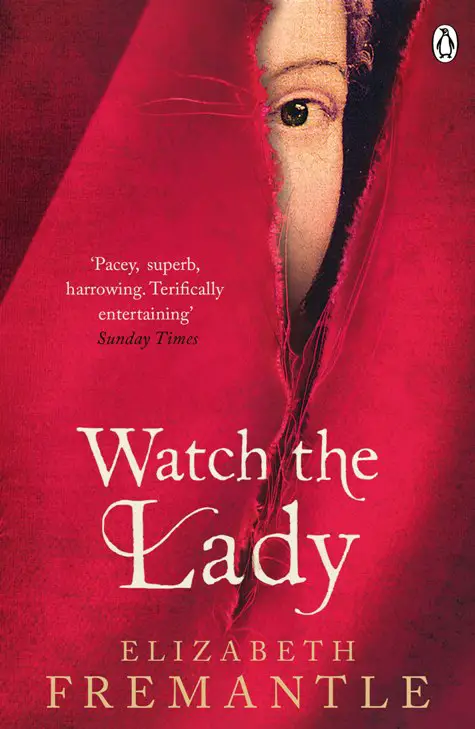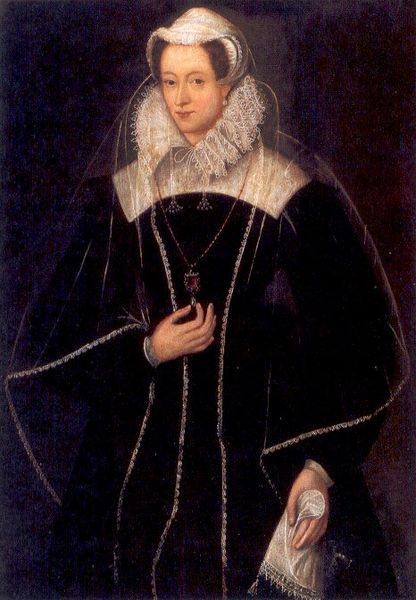Along with the nearly created Dukes of Suffolk and Norfolk, the only other duke in the Kingdom was Edward Stafford, Duke of Buckingham. Buckingham was a descendant of Thomas Woodstock, youngest son of Edward III. In addition to this, his mother was Katherine Woodville, sister of the late Queen Elizabeth Woodville, wife of King Edward IV. At the time, Buckingham was also the richest peer in England, with an annual income of around £6000 per year (£2,902,620.00) as well as being High Steward of England and a Privy Councillor. These positions gave Stafford a great deal of power. With royal blood running through his veins and an arrogant attitude, Buckingham was a regular member at court but it was reported that he often made those around him feel uncomfortable.
Thomas Howard, Duke of Norfolk, came from a noble family. His father, John Howard, 1st Duke of Norfolk, was head of Richard III's vanguard at the Battle of Bosworth in 1485 and was slain defending his king by an arrow through the brain. Thomas also fought at the Battle of Bosworth but was injured and captured by Henry VII. Over time, Howard proved his loyalty to the new Tudor Monarch and was restored to his title of Earl of Surrey. He served as an executor of Henry VII's will at his death in April 1509 and served as Earl Marshal at Henry VIII's coronation in June 1509.
His dukedom in 1514 was a reward for his service at the Battle of Flodden on 9th September 1513 when the English forces, under Howard's command, defeated those of the Scots, and James IV was killed. When Howard was created Duke of Norfolk in 1514, his son, also Thomas, was created Earl of Surrey. Norfolk died on 21 May 1524 at around the age of 81 and his son succeeded him as 3rd duke. The 3rd duke's nieces, Anne Boleyn and Catherine Howard, both became queen consorts and his daughter, Mary Howard, married Henry VIII's illegitimate son, Henry Fitzroy, in 1533.
Unlike the Dukes of Norfolk and Buckingham, Brandon did not come from royal blood nor did he come from a noble family. His father had fought valiantly for Henry VII at the Battle of Bosworth but there was no history of nobility – he had, after all, only been knighted the day before the battle. Instead, Brandon's rise was due to his friendship with Henry VIII and his proven skills in military service. Born in 1485, Brandon was about six years older than the king, but shared many common interests with him including jousting, hunting and archery. Brandon also shared a deep love of women and enjoyed participating in courtly dances and masquerades. Brandon would go one step further and in early 1515 he married Henry VIII's younger sister, Mary, without the king's permission. Although it was an act that was considered treason, the king forgave Brandon and Mary and welcomed them back at court with only the threat of a fine. Brandon was now not only the Duke of Suffolk and the king's greatest friend, he was also Henry VIII's brother-in-law. In addition, in the 1520s, with the king having no male heir, it was Brandon's son, Henry, that had a strong claim to the throne. An impressive feat for a man born of no royal blood!
The Duke of Buckingham was executed on the 17th May 1521 upon Tower Hill. He had been charged with desiring the king's death and seeing himself on the throne. With Buckingham's execution, the Dukes of Norfolk and Suffolk became the two highest peers in the realm.
Over the decades, the Howards rose and fell in the king's favour but it was Charles Brandon, Duke of Suffolk, that always retained the king's friendship, as well as playing an important part in the government of England at the time. He was appointed as President of the King's council and in 1539 Brandon was appointed the Lord Grand Master/Lord Steward of the Household. Brandon was now the first dignitary of court and was responsible for the household of the court below stairs.
Also on 1st February 1514, Charles Somerset was created Earl of Worcester. You can read more about this in Claire's article over on The Anne Boleyn Files.
Sarah Bryson is the author of Mary Boleyn: In a Nutshell. She is a researcher, writer and educator who has a Bachelor of Early Childhood Education with Honours and currently works with children with disabilities. Sarah is passionate about Tudor history and has a deep interest in Mary Boleyn, Anne Boleyn, the reign of Henry VIII and the people of his court. Visiting England in 2009 furthered her passion and when she returned home she started a website, queentohistory.com, and Facebook page about Tudor history. Sarah lives in Australia, enjoys reading, writing, Tudor costume enactment and wishes to return to England one day. She is currently working on a biography of Charles Brandon, Duke of Suffolk.
Sources
* Some sources say "Candlemas Day", but the creations are noted as 1st February in Letters & Papers.
- Letters and Papers, Foreign and Domestic, of the Reign of Henry VIII, 1509-47, ed. J.S Brewer, James Gairdner and R.H Brodie, His Majesty's Stationery Office, 1862-1932.
- Hutchinson, Robert (2009) House of Treason: The Rise & Fall of a Tudor Dynasty, Phoenix, London.
- Weir, Alison (2008) Henry VIII: King & Court, Vintage Books, London.
- Wriothesley, C, Hamilton, W.D. (ed) 1875, A chronicle of England during the reigns of the Tudors, from A. D. 1485-1559, Camden Society, London.





Interesting article. Thank you for sharing.
By the way, there is a mistake in the article about the age difference between Henry VIII and Charles Brandon (CB). The article says 14 years; actually it is only 6 or 7, depending on whether you consider CB’s birth year as 1485 or 1484.
Hi Anita,
Thank you, I’ve edited it for Sarah. She’d put his birthdate at around 1485 so her addition/subtraction had gone astray, perhaps she hadn’t had her morning coffee! Thank you x
The first Duke of Norfolk who fought with Richard III was John Howard , not Thomas as stated.
Thank you for spotting that, I’ve edited it for Sarah.